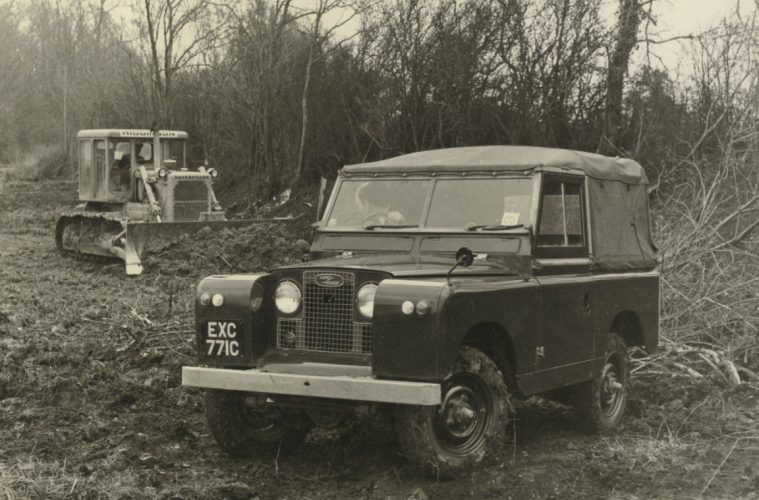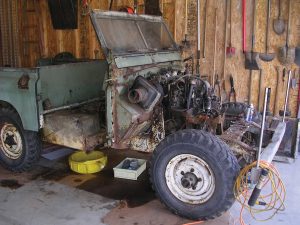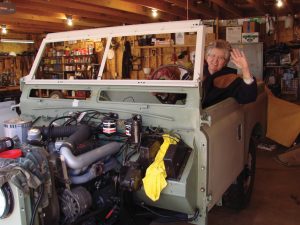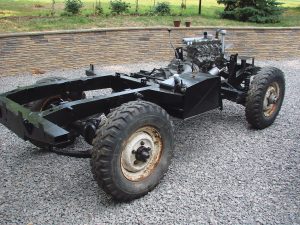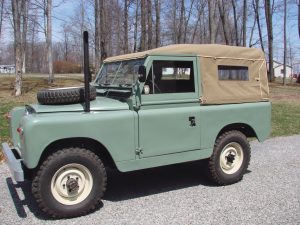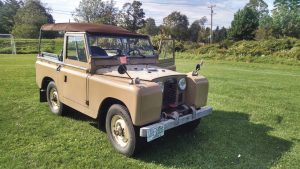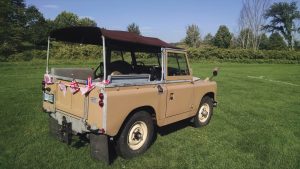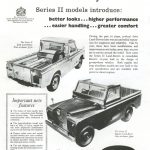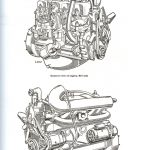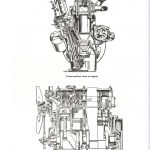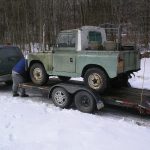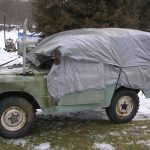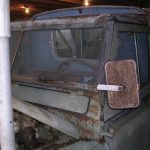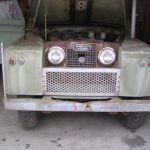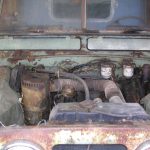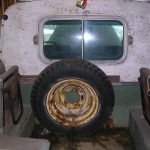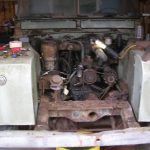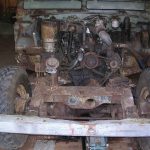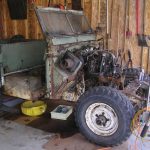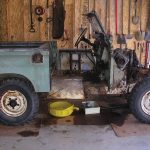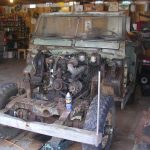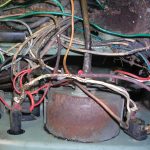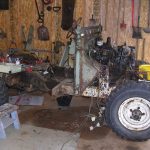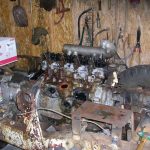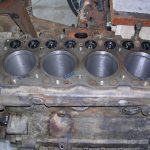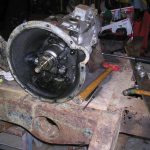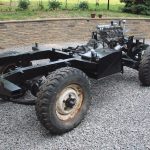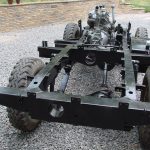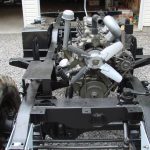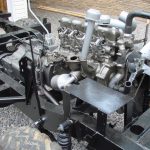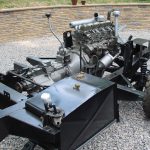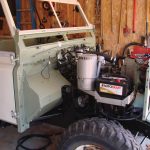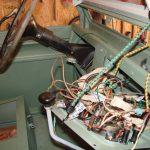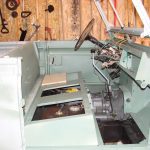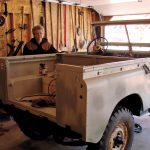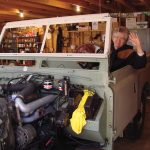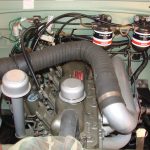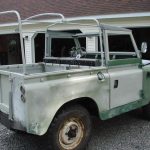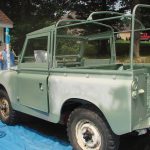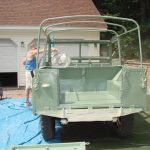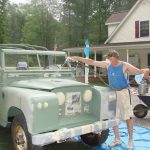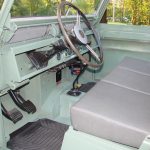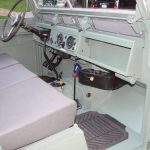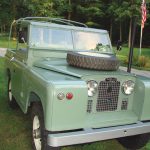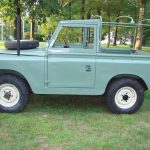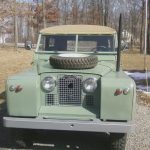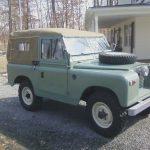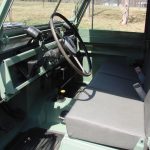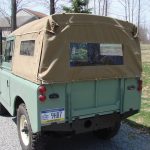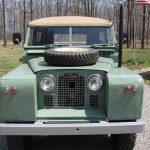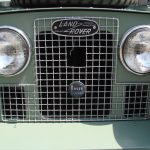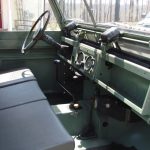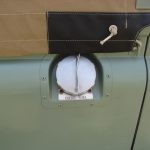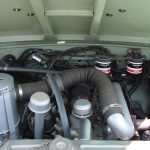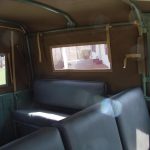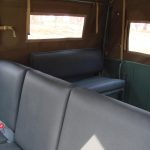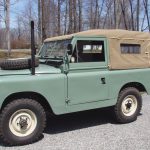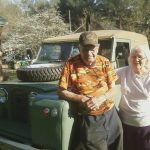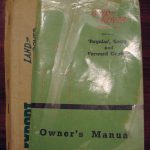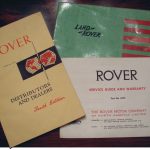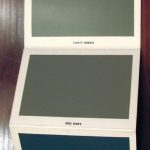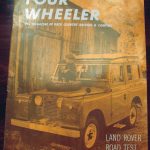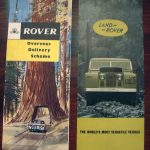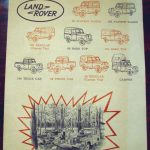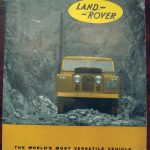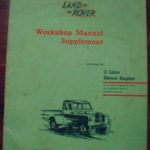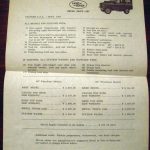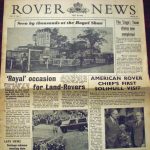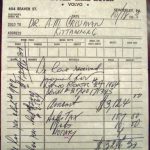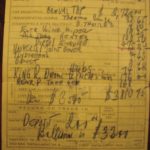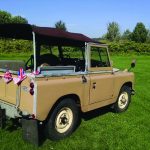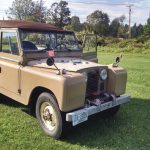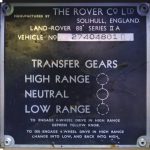Land Rover offered diesel engines on the Series II-A and Series III models before they pulled all Land Rovers out of the US market in 1974. Given their limited horsepower and extraordinary clatter, few sold in the US and not many Series diesels remain in use. We want to celebrate two enthusiasts who still enjoy their Land Rover diesels.
Ray Rozic, Cabot, PA, is a Process Engineer with Penn United Technologies, an employee-owned handgun manufacturer for over 45 years. His father-in-law, Dr. A.M. “Bimmer” Crissman, had a camp in north central Pennsylvania from which he loved to turkey hunt. Back in 1963, he spent a year researching the best (and limited) diesel options in 4×4’s by driving 100 miles to Ascot Motors in Sewickley, PA.
The salesman tried to dissuade him, but Bimmer ordered a diesel Series II-A. He picked it up at the docks in Newark, NJ, and drove it back to the Pittsburgh area.
Becky Rozic learned to drive in that Land Rover. “As a kid we liked it,” she recounted. “When you drove through town, everyone looked. We lived on a farm in Kittanning, PA, on a few acres with horses. My father used it as a daily driver. It didn’t go over 40 mph. Our boys, Seth and Andrew, had to learn to drive standard, too.”
The Land Rover meant so much to the family that Ray knew he had to restore it. It had been parked under a tree for decades, so it was trailered to Ray’s newly completed garage. Ray remembers, “It looks pretty good from a distance, but I soon realized that the frame was rusted, the engine was frozen, the bulkhead was rusted; it was as bad as it could get—except for the aluminum parts.”
“I saved as much as I could, including the unique exhaust that Bimmer created to pull the diesel fumes away from the passengers. I purchased a new frame, standard springs, a new wiring harness and a lot of other parts from Rovers North. I thought I had the job done in four years, until I found that not replacing the oil pump in the engine caused a spun bearing. I had the crank reground and installed new bearings and an oil pump. The transfer case received new bearings, but the transmission seemed fine. The odometer indicated 37,000 original miles, but I’m guessing that it was more like 50,000. When I started it up again for the first time, I was sweating bullets,” he said. “My heart was in my throat.”
As of now, they have put about 600 miles on the new engine and it’s running quite well. Ray said, “Everyone in the family loves it, as will our future grandkids. We get thumbs up and honking horns every time we drive it.” Without an overdrive it’s still slow, but the Kodiak heater keeps them warm during drives to work. “I’d love to take it on a long trip in the future,” said Ray. The Rozic’s live near Bantam, PA, the original home of the first Jeep, and they love to take it to Jeep celebrations held there.
Mark and Martha McDonough, Brentwood, NH, own a marvelous ‘66 Series II-A diesel that they had restored in 1995. “We bought it from an estate sale in Maine with only 23,000 miles on it. The original owner was a former pilot for Eastern Airlines who used it for clearing his land. When it came time to restore it, Mark noted, “I did the mechanical work, rebuilt the drivetrain, bought a galvanized frame from Rovers North and created the rolling chassis. The 4×4 Center in South Burlington, VT, oversaw the body work and completed the job for me.”
You might notice the unique front wings and parking lights. Mark explained, “The fenders and lamp pods are original; they were optional when you ordered jerry can holders installed on the vehicle. I prefer not to drive with full fuel cans on the front bumper, so I removed the cans and the holders, but still have them.”
Mark said that they now have over 80,000 miles on their handsome canvas top, with its rarely seen capstan winch. Recently, that very winch helped haul out a couple of rescue canoes for the Brentwood Fire Department, over a 30-foot drop and up onto the bank, “Quite a haul,” he said. Mark has taken the Land Rover on some long distance trips to upstate New York and as far south as Virginia. It’s also made four trips to the British Invasion in Stowe, VT. “It doesn’t like the hills, of which we have few in southern New Hampshire. After driving it bone stock for two years, I decided to install the Rovers North high ratio gearbox offered back in the 90s. The change in the final drive lets me run 70 mph on the flat while getting 26-27 mpg.”
We know there are more 2.25 out there, along with a smattering of imported 2.5, 200 and 300 Tdi’s, and celebrate those enthusiasts who run them as symbols of Land Rover’s diesel heritage.
By Jeffrey Aronson
